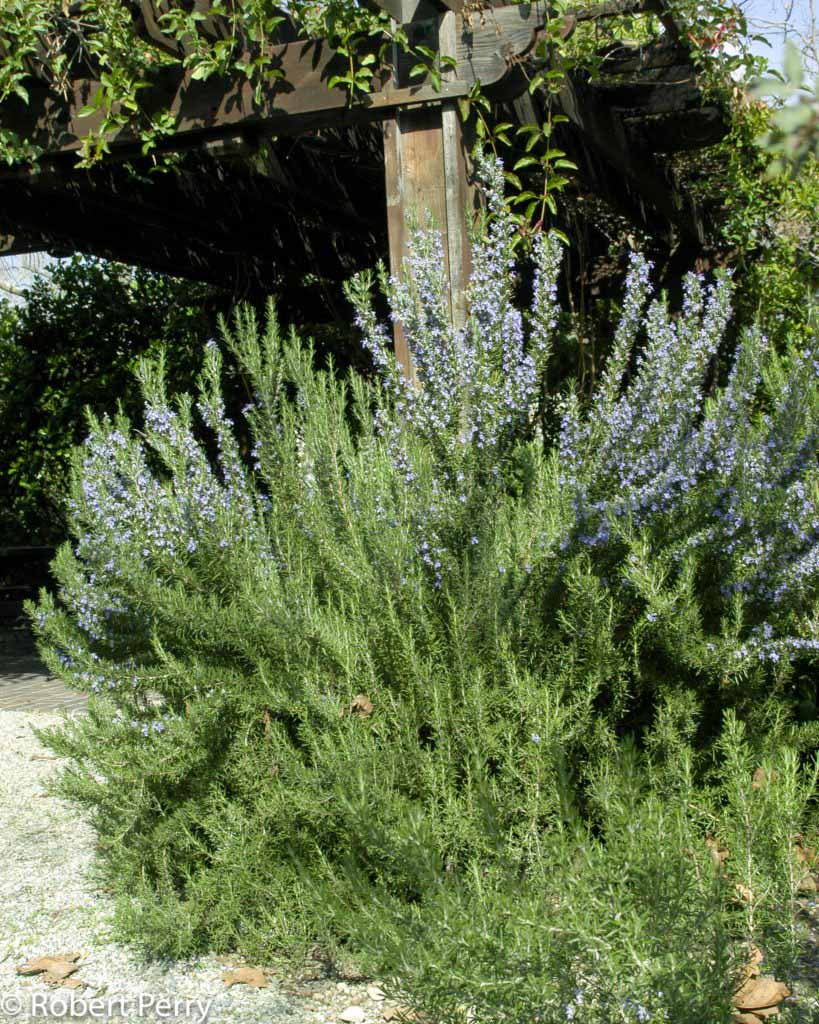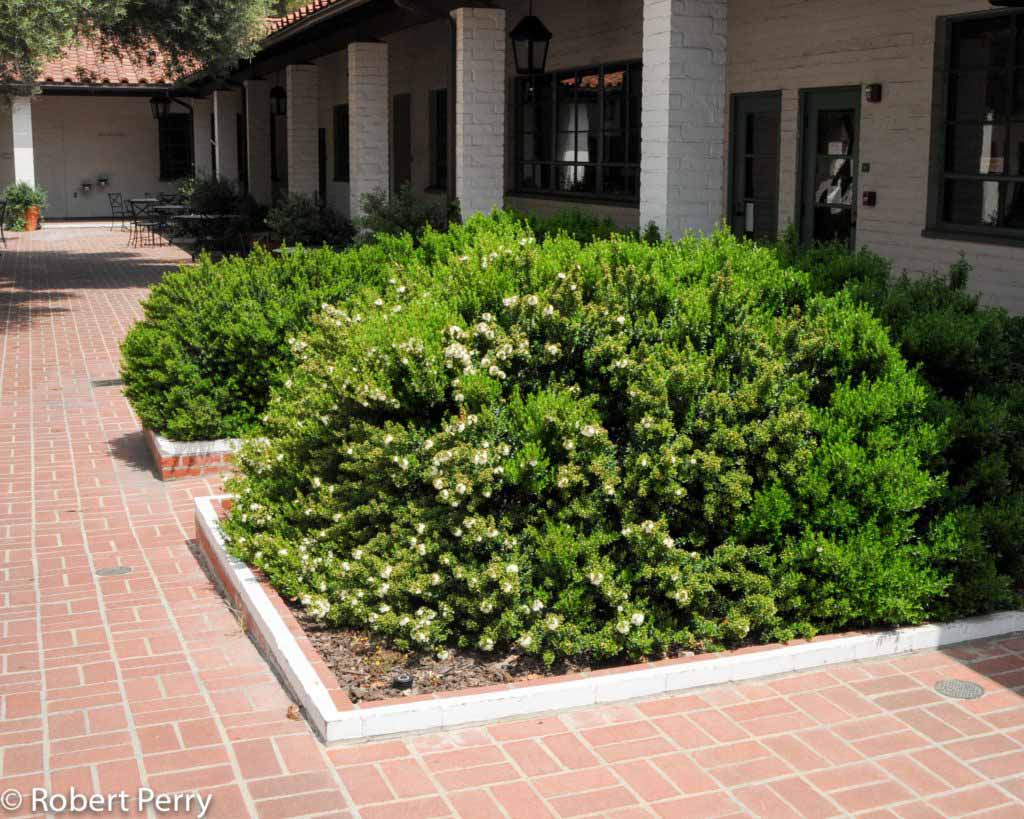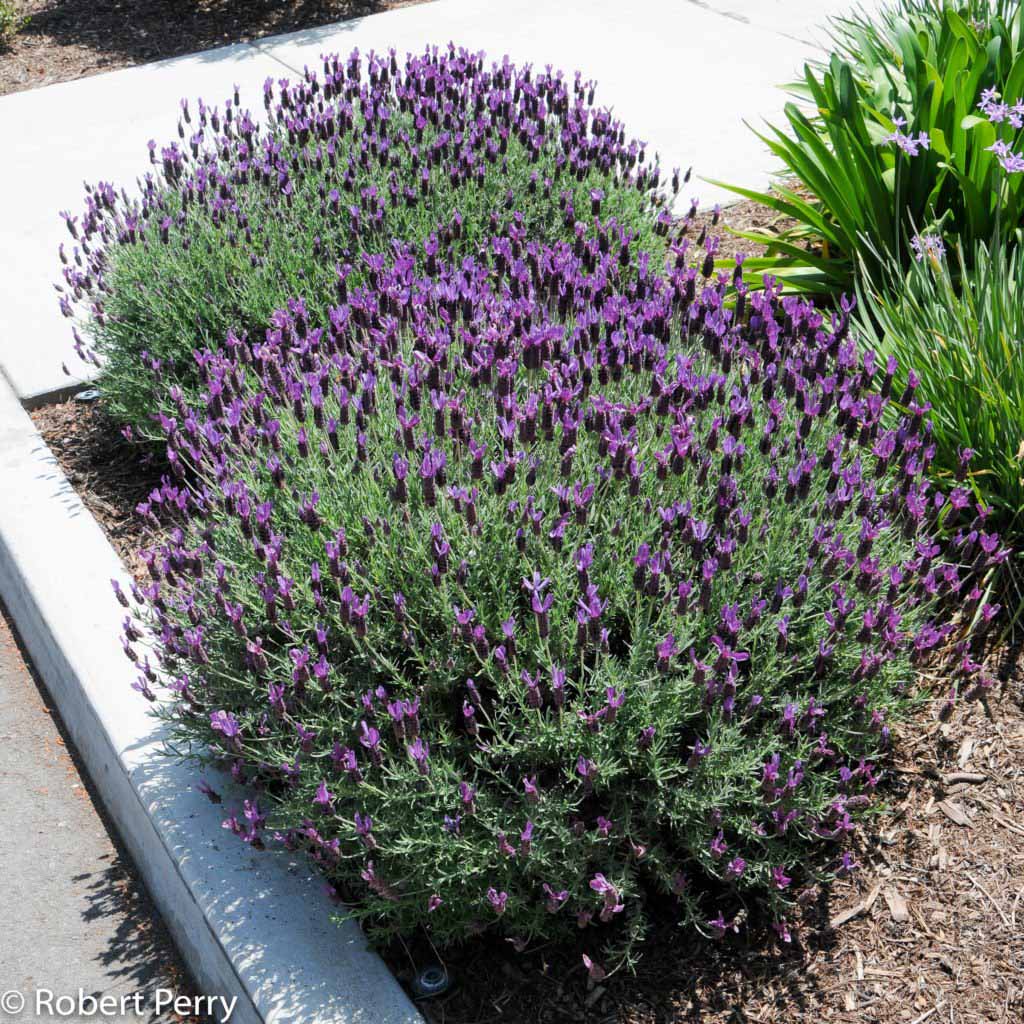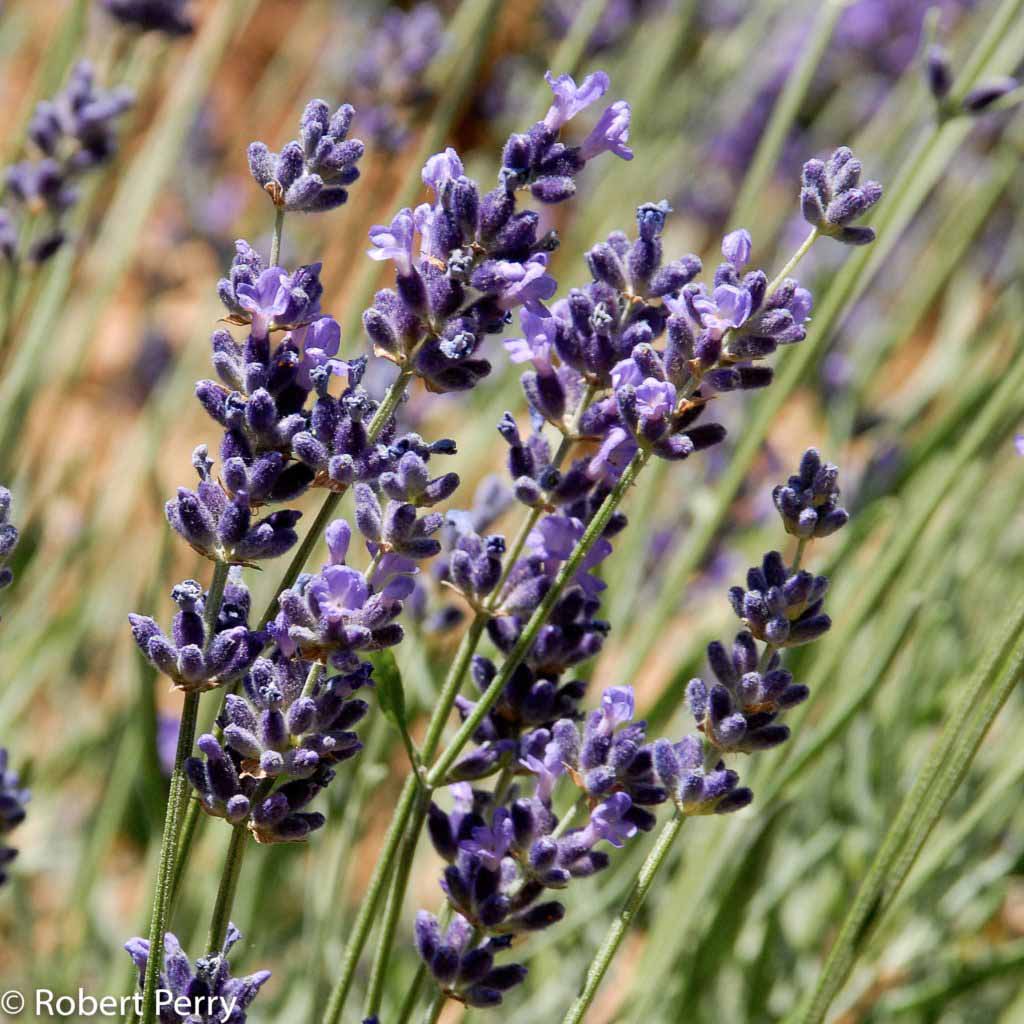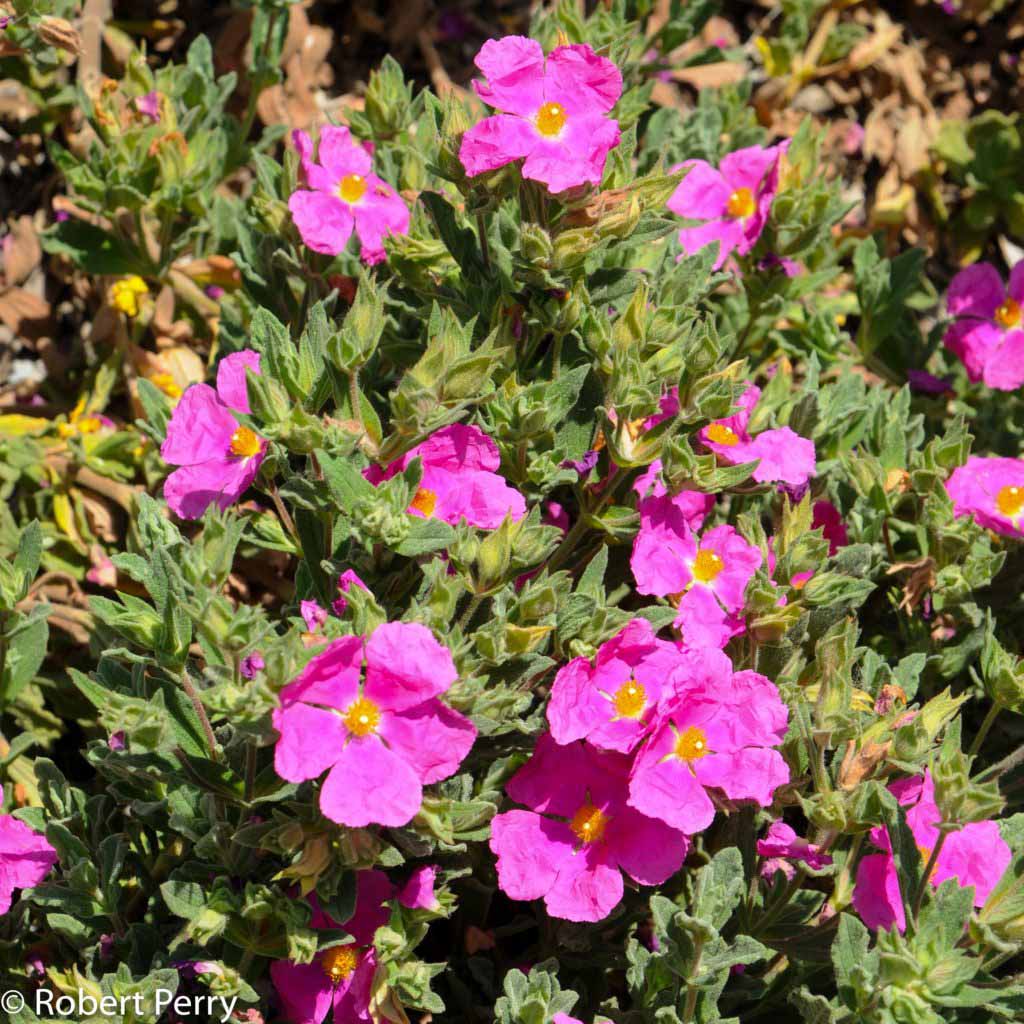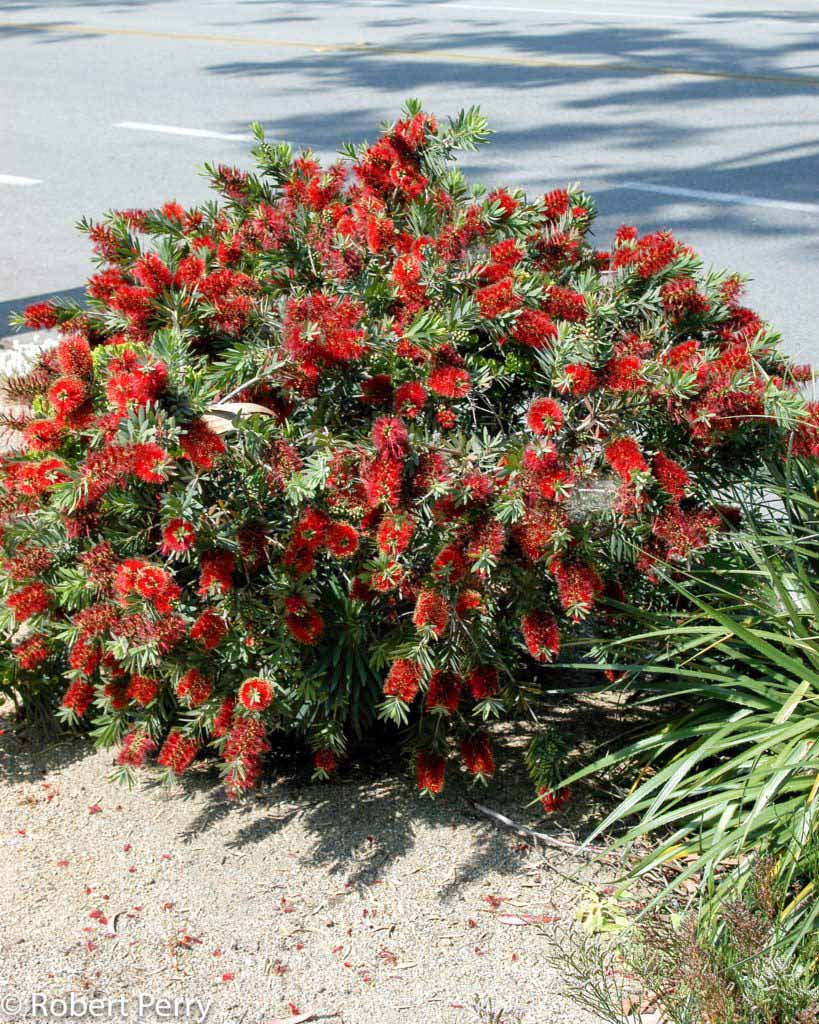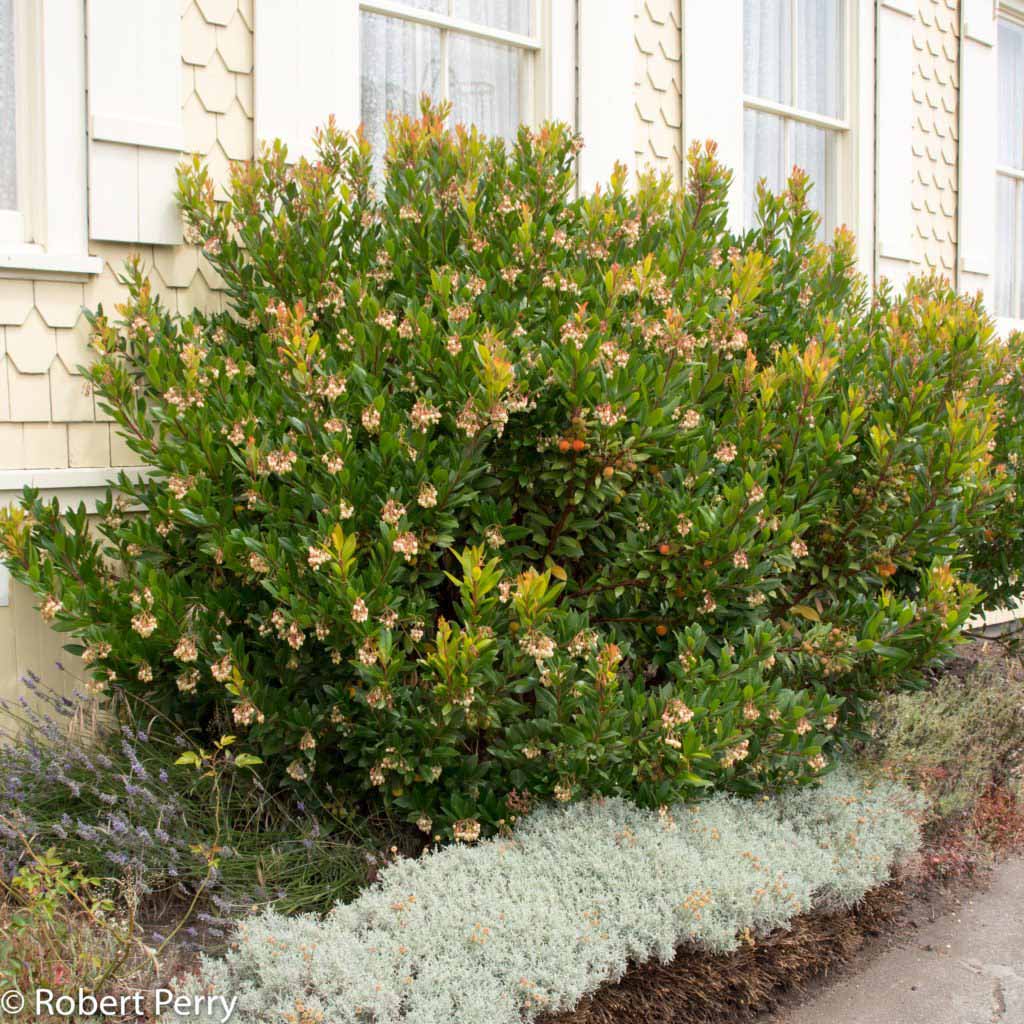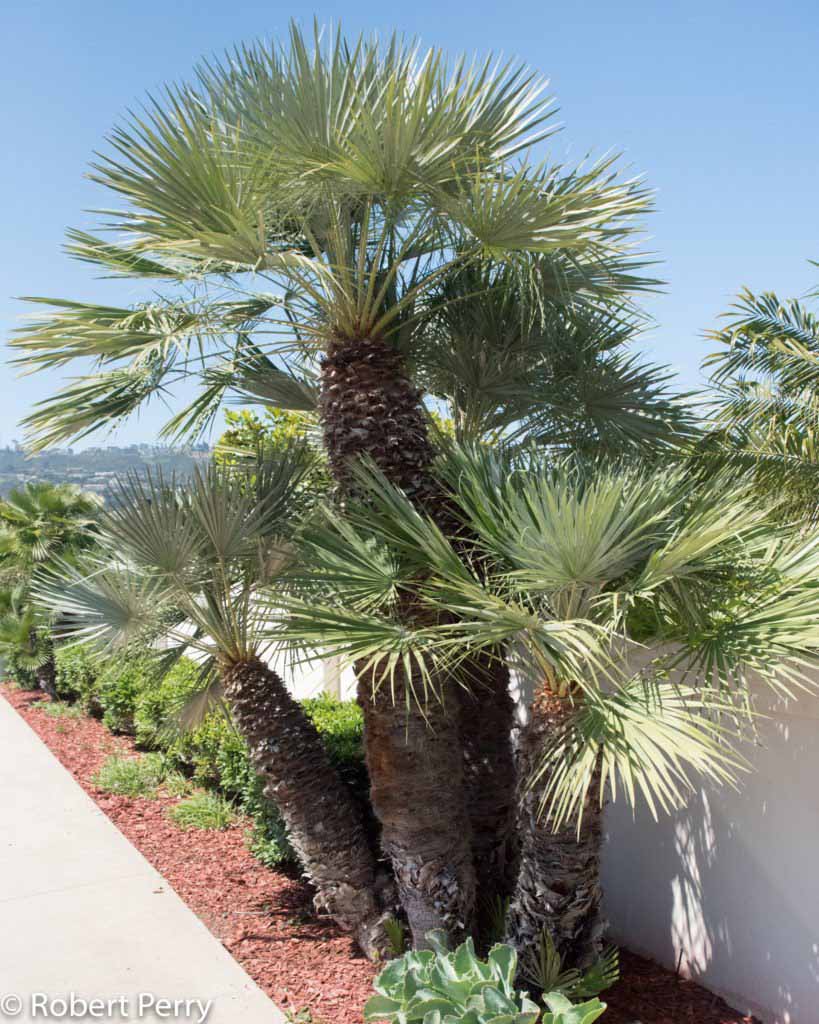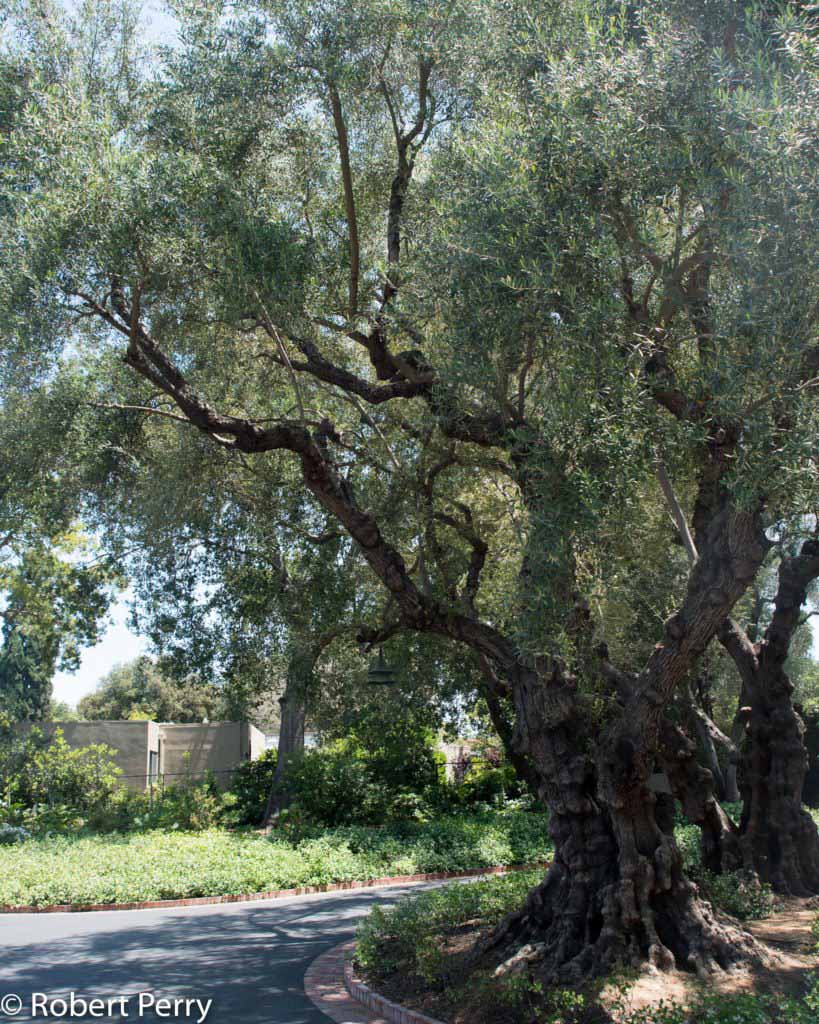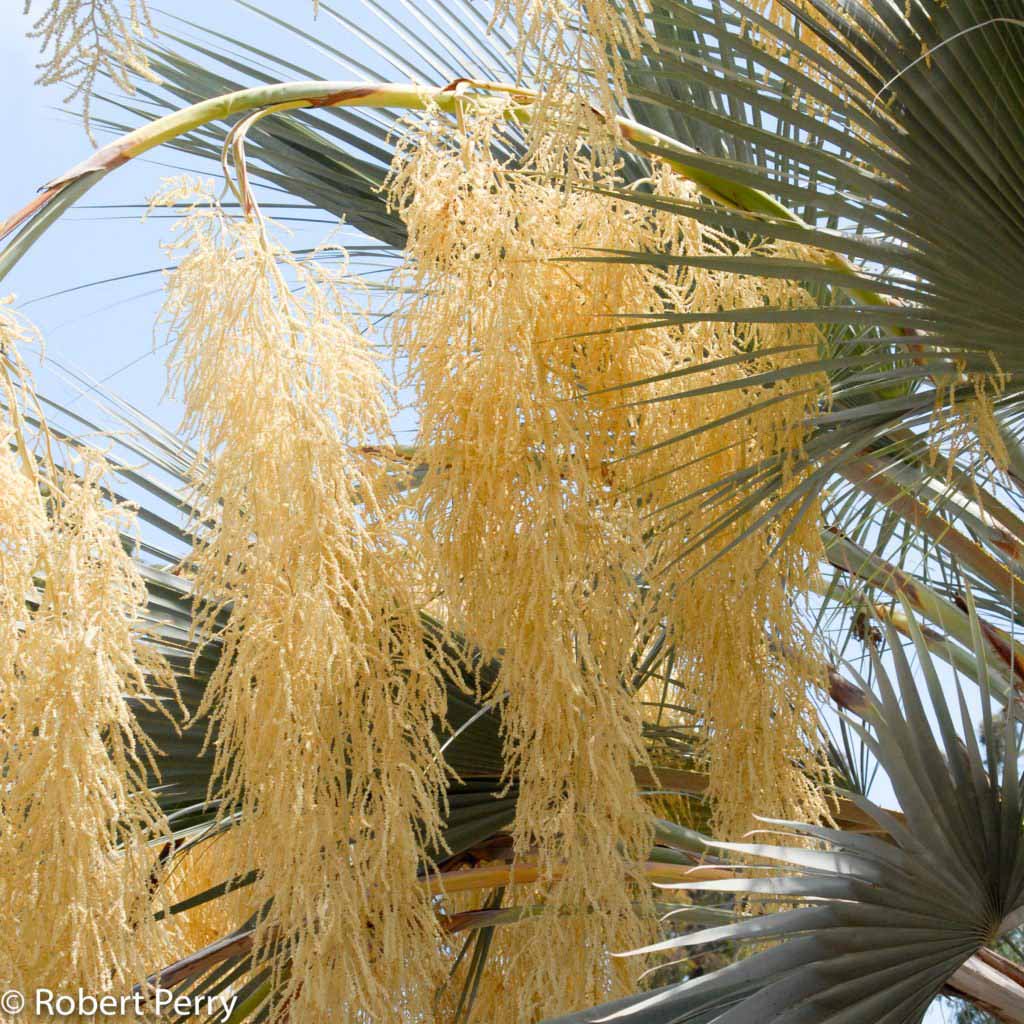Rosemary + cvs
The common rosemary is a large evergreen shrub growing with upward growing branches and dense needle-like leaves. Mature and unclipped plants can reach 6-8 ft. high and spread 10-12 ft. across. These leaves are deep green above and whitish below. Showy clusters of small medium blue flowers occur in late winter and intermittently throughout the […]
